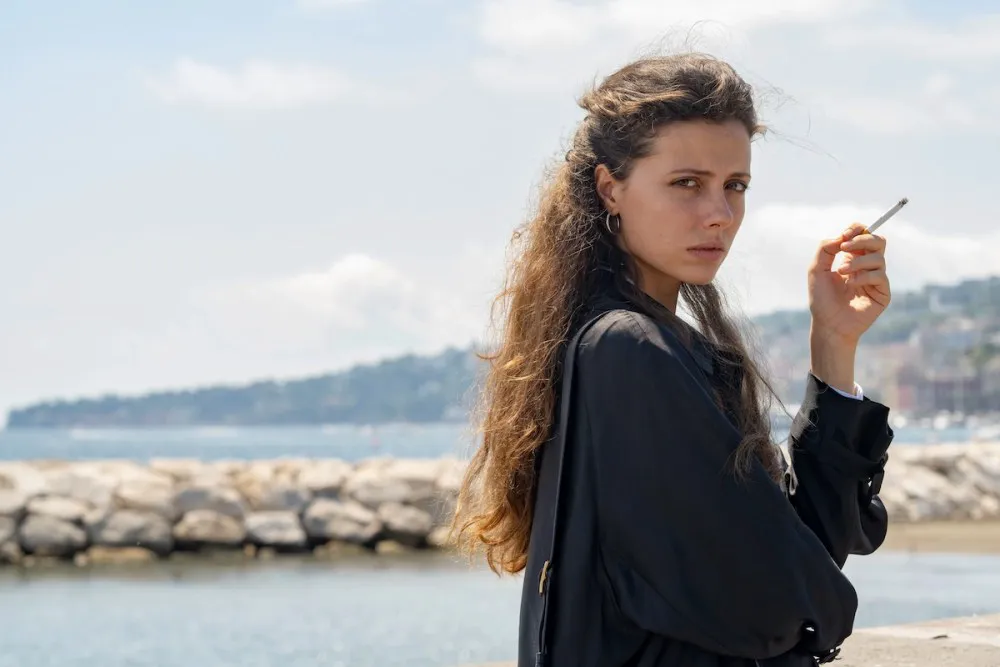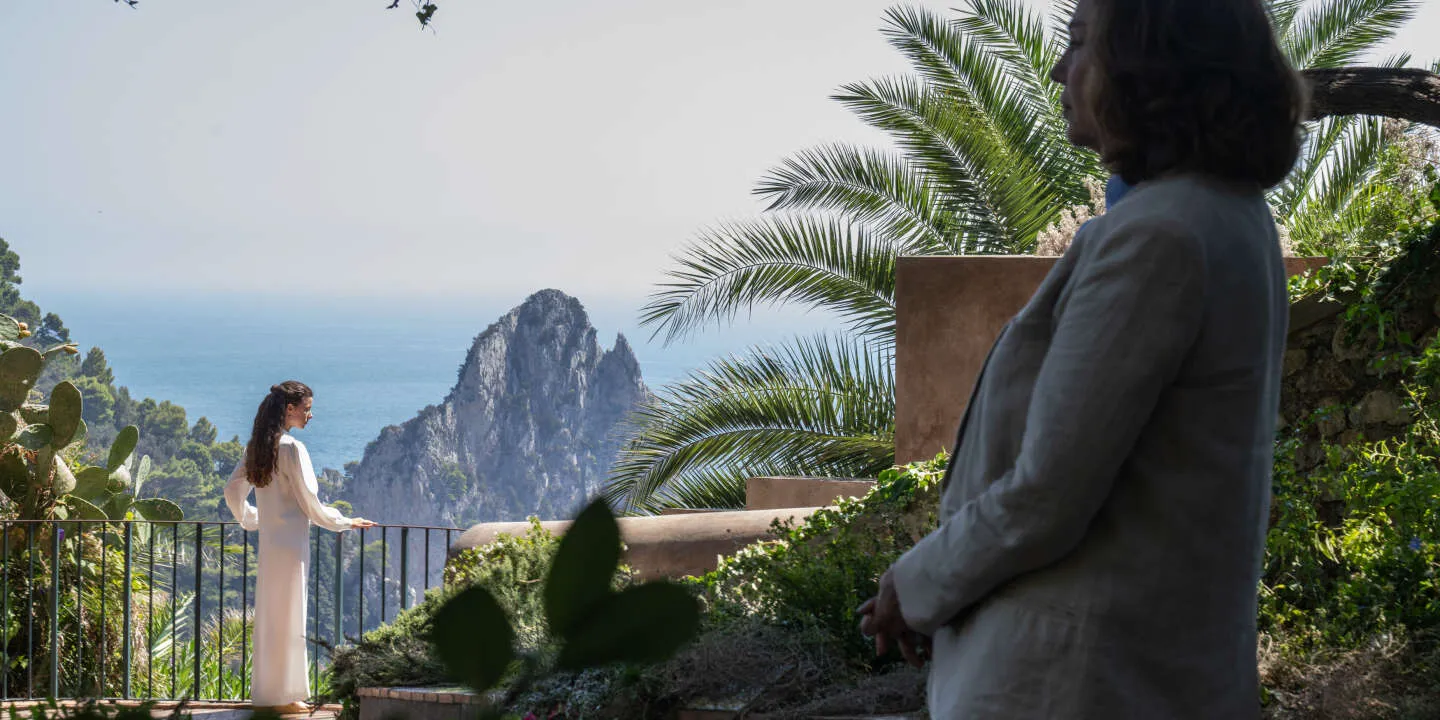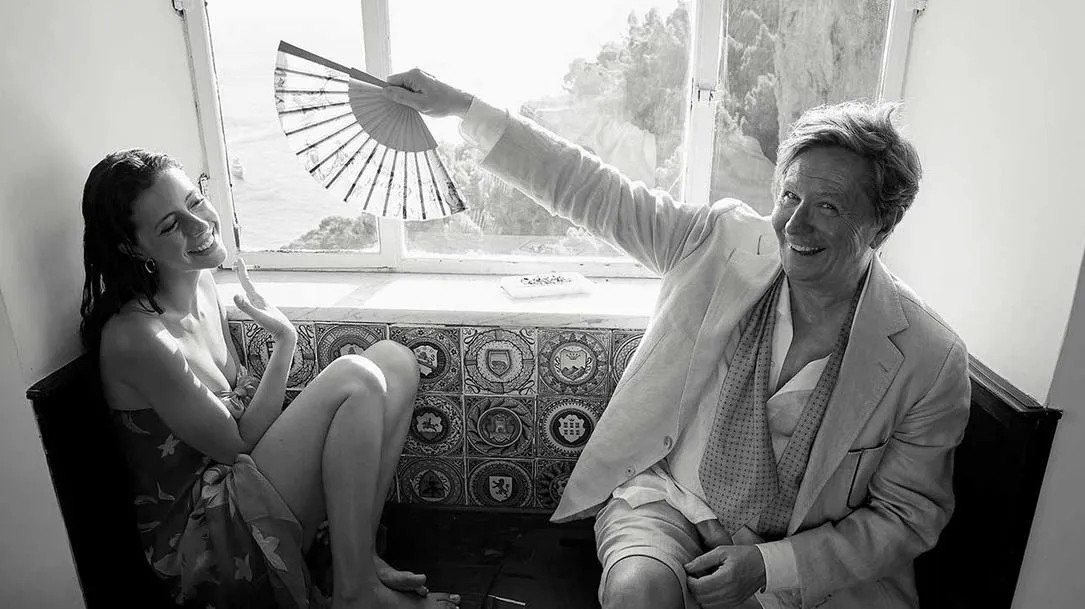Parthenope: A Neapolitan Rhapsody of Life and Loss
In 1950, a lavish carriage-bed, straight from Versailles, arrives at the doorstep of a wealthy Neapolitan family, eagerly awaiting the birth of their child. As the Tyrrhenian Sea whispers its ancient secrets, a girl is born, christened Parthenope (Celeste Dalla Porta) in honor of the ancient Greek nymph for whom Naples was named. Blessed with beauty and grace, Parthenope embraces life with unbridled passion, flitting between lovers and interests, dabbling in acting, studying anthropology, and dancing until dawn. Yet, this seemingly charmed existence is shadowed by tragedy: the suicide of her brother, Raffaele (Daniele Rienzo), whose light dimmed in the radiant glow of Parthenope.

Celeste Dalla Porta as Parthenope in a still from the film “Parthenope”
Sorrentino’s Ode to Naples
Italian directors often turn to their homeland for cinematic inspiration, and Paolo Sorrentino, a native of Naples, is no exception. His previous, semi-autobiographical film, “The Hand of God,” delved into the director’s youthful memories. Sorrentino painted a portrait of his large, boisterous family grappling with the loss of loved ones – his parents, victims of a gas leak. While “The Hand of God” was steeped in nostalgia and focused on accepting tragedy, “Parthenope,” though sharing similar themes and a setting in the 1970s and 1980s, eschews romanticizing the past. Instead, it invites viewers to revel in a majestic portrait of the city and the nation it embodies.

Celeste Dalla Porta as Parthenope in a still from the film “Parthenope”
The Ideal Woman, The Italian Ideal
Italy itself is personified as an ideal woman, a nymph named Parthenope. Sorrentino’s camera lingers on her beauty, intelligence, kindness, and sensuality, capturing the gazes of men and the reverence of women. This portrayal of the “ideal” woman can be problematic, echoing misogynistic tropes like the “holy sex worker” or the “manic pixie dream girl.” While cinematographer Daria D’Antonio’s lens occasionally objectifies the protagonist, it’s crucial to consider Sorrentino’s artistic context. In his films, the male gaze upon the female form is often tinged with a sense of awe and trepidation, like a child encountering something forbidden yet alluring. In “Parthenope,” this effect is mitigated by the depth and complexity of the protagonist’s character.

Gary Oldman on the set of “Parthenope”
A Life Unfolding
Sorrentino chronicles Parthenope’s life across decades: a vibrant youth gives way to self-discovery, parties and romances fade into the quiet of solitude, and light dresses are replaced by the attire of a university professor. While the film can be divided into temporal segments, Sorrentino primarily crafts a sensual narrative, prioritizing feeling over plot. Parthenope’s biography embodies the legacy of Italian culture – provincial and grand, sexual and vital, religious and libertine, criminal and free. Her partners repeatedly ask her, “What are you thinking about?” Paolo Sorrentino poses the same question. For nearly two hours, he conducts an anthropological study of Italy-Parthenope, arriving at a profound conclusion: human life and national culture cannot be judged, only witnessed in all their beauty and horror.